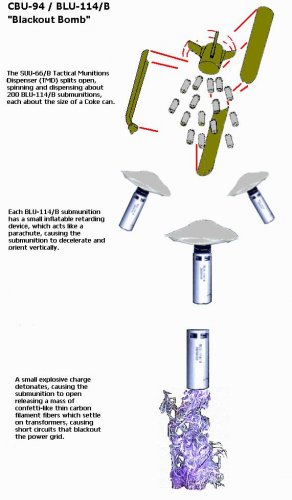The International Committee of the Red Cross (ICRC)
https://ihl-databases.icrc.org/customary-ihl/eng/docs/v2_rul_rule42
Practice Relating to Rule 42. Works and Installations Containing Dangerous Forces
I. Treaties
Additional Protocol I
Article 56 of the 1977 Additional Protocol I provides:
1. Works and installations containing dangerous forces, namely dams, dykes and nuclear electrical generating stations, shall not be made the object of attack, even where these objects are military objectives, if such attack may cause the release of dangerous forces and consequent severe losses among the civilian population. Other military objectives located at or in the vicinity of these works or installations shall not be made the object of attack if such attack may cause the release of dangerous forces from the works or installations and consequent severe losses among the civilian population.
2. The special protection against attack provided for in paragraph 1 shall cease:
(a) for a dam or a dyke only if it is used for other than its normal function and in regular, significant and direct support of military operations and if such attack is the only feasible way to terminate such support;
(b) for a nuclear electrical generating station only if it provides electric power in regular, significant and direct support of military operations and if such attack is the only feasible way to terminate such support;
(c) for other military objectives located at or in the vicinity of these works or installations only if they are used in regular, significant and direct support of military operations and if such attack is the only feasible way to terminate such support.
3. In all cases, the civilian population and individual civilians shall remain entitled to all the protection accorded them by international law, including the protection of the precautionary measures provided for in Article 57. If the protection ceases and any of the works, installations or military objectives mentioned in paragraph 1 is attacked, all practical precautions shall be taken to avoid the release of the dangerous forces.
…
4. The High Contracting Parties and the Parties to the conflict are urged to conclude further agreements among themselves to provide additional protection for objects containing dangerous forces.
Additional Protocol I
According to Article 85(3)(c) of the 1977 Additional Protocol I, “launching an attack against works or installations containing dangerous forces in the knowledge that such attack will cause excessive loss of life, injury to civilians or damage to civilian objects” is a grave breach of the Protocol.
Additional Protocol II
Article 15 of the 1977 Additional Protocol II provides:
Works or installations containing dangerous forces, namely dams, dykes and nuclear electrical generating stations, shall not be made the object of attack, even where these objects are military objectives, if such attack may cause the release of dangerous forces and consequent severe losses among the civilian population.

